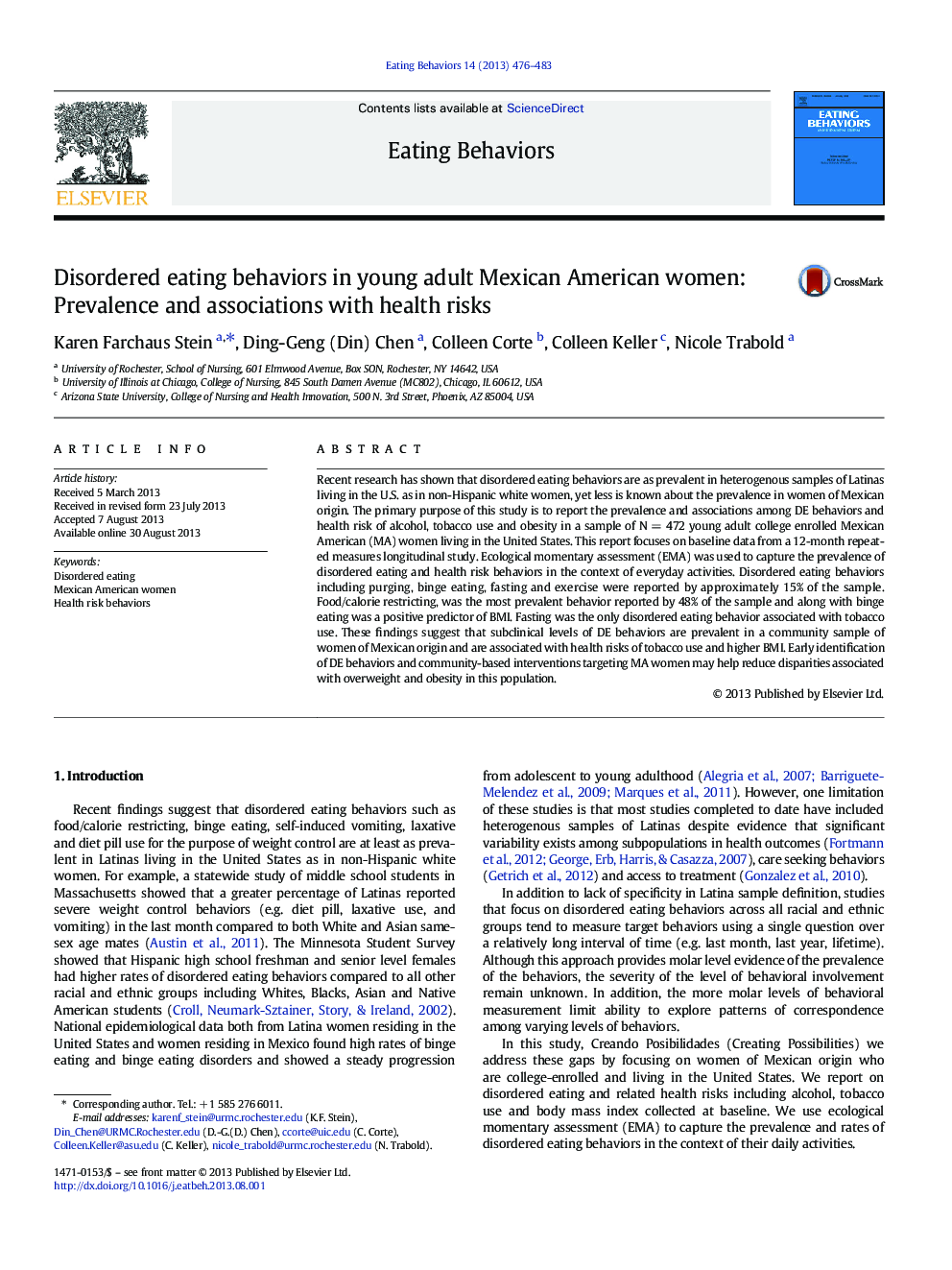| Article ID | Journal | Published Year | Pages | File Type |
|---|---|---|---|---|
| 906331 | Eating Behaviors | 2013 | 8 Pages |
•Ecological momentary assessment measured disordered eating in women of Mexican origin.•Disordered eating (DE) behaviors were reported by approximately 15% of the sample.•Restricting and fasting were associated with several other DE behaviors.•Binge eating and restricting were associated with higher BMI.•Subclinical levels of DE behaviors lead to obesity and substance use.
Recent research has shown that disordered eating behaviors are as prevalent in heterogenous samples of Latinas living in the U.S. as in non-Hispanic white women, yet less is known about the prevalence in women of Mexican origin. The primary purpose of this study is to report the prevalence and associations among DE behaviors and health risk of alcohol, tobacco use and obesity in a sample of N = 472 young adult college enrolled Mexican American (MA) women living in the United States. This report focuses on baseline data from a 12-month repeated measures longitudinal study. Ecological momentary assessment (EMA) was used to capture the prevalence of disordered eating and health risk behaviors in the context of everyday activities. Disordered eating behaviors including purging, binge eating, fasting and exercise were reported by approximately 15% of the sample. Food/calorie restricting, was the most prevalent behavior reported by 48% of the sample and along with binge eating was a positive predictor of BMI. Fasting was the only disordered eating behavior associated with tobacco use. These findings suggest that subclinical levels of DE behaviors are prevalent in a community sample of women of Mexican origin and are associated with health risks of tobacco use and higher BMI. Early identification of DE behaviors and community-based interventions targeting MA women may help reduce disparities associated with overweight and obesity in this population.
